*Important Note: Our specifier personas research is dynamic and ongoing, reflecting trends that may shift over time.
The percentages and rankings provided below represent findings at the time of publication.
5 Key Specifier Personas for the Interior Design Industry
Build personalized specifier journeys for your brand with research-backed buyer personas. More wins, less guesswork.


- Chapter I: Introduction
- Chapter II: Using Personas to Tailor Client Experiences
- Chapter III: Balancing the Physical and Digital Worlds of Product Specification
- Chapter IV: Six Emerging Tensions in B2B Evolution
- Chapter V: What’s a Persona, and Why Should You Care?
- Chapter VI Three Universal Truths, Regardless of Specifier Persona
- Chapter VII Five Unique Specifier Personas for the Interior Design Industry
- Chapter VIII Two Ways to Support Customers
- Chapter lX Specifier Persona Teachable Course
Introduction
One size does not fit all if you’re a product manufacturer who is catering to the clients of the future. Whether you’re a seasoned professional or a newbie, you need design industry market research to appeal more effectively to architects, designers, and other key product selectors who are pressed for time and juggling both physical and digital tools to complete their projects.
Identifying their ideal specification journey is the most strategic step you can take to create an experience that keeps specifiers coming back to your brand.
As the market research division for SANDOW Design Group (and the premier intelligence resource for the interiors industry) ThinkLab leverages its relationships with sister brands such as INTERIOR DESIGN, METROPOLIS, and LUXE to bring together top design professionals and product end users from across the country to tackle the leading challenges facing the industry at large.
We conducted six-months of multiphase market research to develop the design industry's first persona study.
The result? 5 key specifier personas that can help product manufacturers more effectively market to architects and designers (A&D) – and keep them coming back for repeat business.
.jpeg)
Share this

The key to winning more business today is helping specifiers navigate the physical–digital journey they each go through as they interact with your brand and giving them what they want when and how they want it.
You need to understand the unique needs, preferences and values of each specifier persona to strategically tailor your client experiences.
The five specifier persona types we'll cover in this research are:
Balancing the Physical and Digital Worlds of Product Specification
The foundations upon which the interiors industry has built their brands are shifting.
In the past, we have invested primarily in analog, human-driven interactions, with the least investment in digital tools. However, as the tsunami of digital transformation has hit our beloved industry, the brands that get ahead will be those that flip these investments to build a strong foundation of effective digital tools, and then motivate their sales reps to leverage those tools to scale their time.
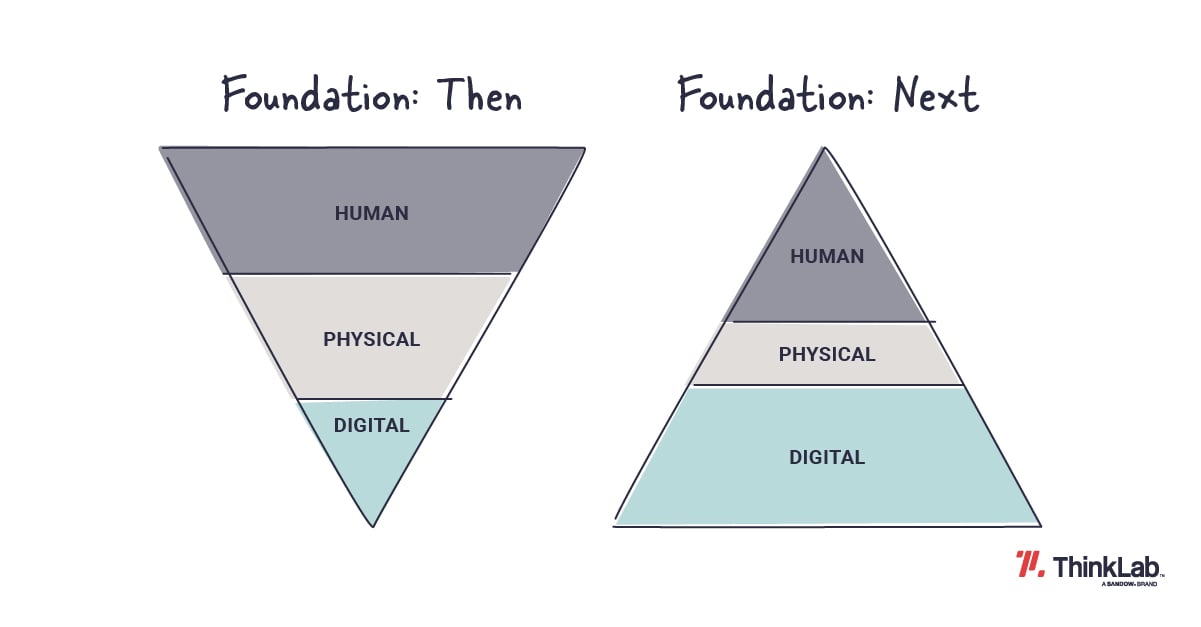
The future is phygital (physical + digital).
The future is phygital (physical + digital).
- In the past, the connection between brands and A&D was built primarily on human interaction and physical experiences, and much less so through digital tools.
- While relationships and the human connection still matter, those that get ahead in the next era will be brands that build a strong foundation in using digital tools and motivate their human reps to leverage them to scale their time.
To gain inspiration from successful phygital experiences outside the industry, listen to “The Future is Phygital in the Design Industry” from Season 2 of our Design Nerds Anonymous podcast.
Six Emerging Tensions in B2B Evolution
A sales rep’s time used to be 80 percent face-to-face with clients. According to ThinkLab data, today that number is now less than half. (For tips on how to get more face time, check out our bite-sized Mpowered podcast episode, “How Do I Get Face Time With Architects and Designers Today?”)
Many would argue that the pandemic didn’t change the way work gets done in the design industry, so much as it accelerated the changes that were already in motion. The effects of that “fast forward” leap, and all the tension that came with it, can still be felt today. But let’s put that tension in context:
- Sales rep as fount of knowledge
- 1–2 decision-makers
- Tenured decision-makers
- Tower-based
- Unique features + benefits
- "Selling to”
- Sales rep as guide
- Up to 14 decision-makers
- 1 in 5 change jobs every year
- Matrix-based
- Unique business value
- “Buying with”
While the sales rep still often makes a difference when it comes to influencing a specifier’s preference or distaste for a brand, the rep alone is no longer the be-all and end-all of the specification process.
According to a recent article from McKinsey & Company, the average B2B buyer today expects to engage with an even mix of sales channels, following a “rule of thirds.”
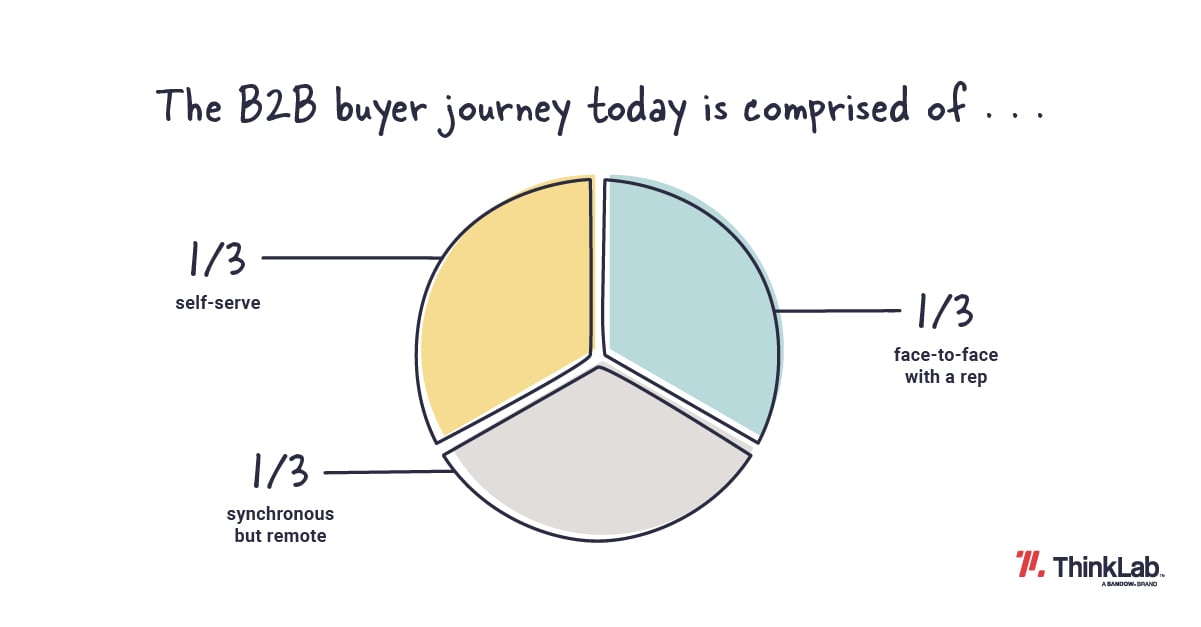
The B2B buyer journey today is comprised of:
- 1/3 of their time spent face-to-face with a rep
- 1/3 synchronous but remote
- 1/3 self-serve
As a result, B2B buyers want to establish a level of trust with more facets of a brand than just the rep alone.
What’s a Persona, and Why Should You Care?
One of the main content management companies in the industry today — and digital marketing experts, to boot — is HubSpot. In one article, HubSpot defined buyer personas as representations of your ideal customers based on behavioral data and research; these personas are used quite often in the consumer marketing space and “help you appeal more authentically and personally to your consumers, expand your reach, and create lifelong brand advocates.”
Collecting customer demographics and establishing behavior patterns, motivations, and goals are crucial to developing personas. As HubSpot puts it, “The more detailed you are, the better."
For example, if you are a brand that sells sustainable clothing for children, you might create a key buyer persona that sounds like this:
- Name: Anna
- Location: Boulder, CO
- Age: 30–35 years old
- Profile: Working mom
- Characteristics: Loves nature, takes care of the environment, vegan dietary preferences, expendable income to spend on sustainably sourced items, activist/volunteer
- Goals: Lowering her carbon footprint, starting a community garden, saving money for an electric
When you create a buyer persona that is more detailed, it helps your brand to prioritize where to focus your time and efforts. It also helps you align across the organization so you’re targeting the right leads and nurturing them using a tailored approach to your sales and marketing process.
In our Design Nerds Anonymous podcast episode, “Why Your Brand Needs Specifier Personas Now More Than Ever,” we interviewed Jim Kraus, president of the Buyer Persona Institute, who walked us through what he calls “the five rings of buying insights.”
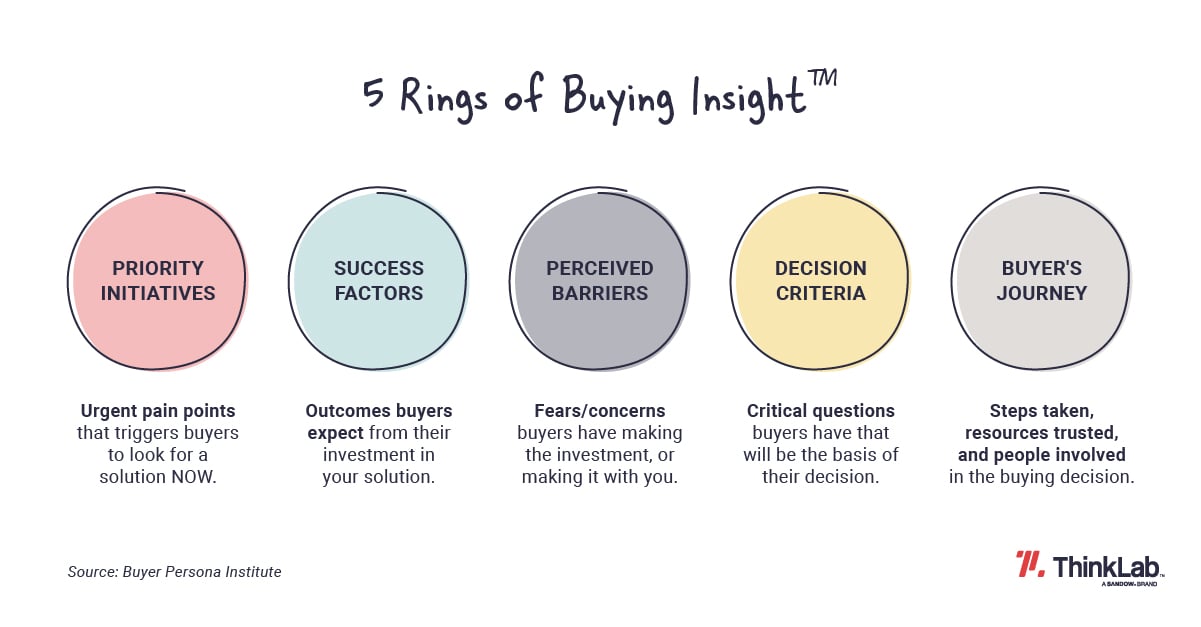 Ring 1: Priority Initiatives
Ring 1: Priority Initiatives
- What is triggering a buyer to look for your product in this moment?
Ring 2: Success Factors
- What are the things they want to achieve with the investment they’re making?
Ring 3: Perceived Barriers
- What would cause a buyer to have a concern about their investment (with your brand)?
Ring 4: Decision Criteria
- What are all the questions a buyer will ask before making the decision to buy this product (from you)?
Ring 5: The Buyer’s Journey
- Identify the key decision-makers, and outline their journey though the buying process.
Kraus says that once you have identified your persona(s) and created your five rings of buying insights, the next step is critical: You need to map the buyer wants and needs to your capabilities.
ThinkLab has done that by mapping ideal phygital journeys based on five different buyer personas for the design industry.
We consider honing your marketing and sales strategy based on unique persona types to be the most strategic way to find and nurture the clients best suited to your brand. But sometimes it’s nice to find some common ground that applies to specifiers as a whole.
The design industry research conducted during our study revealed that there are, in fact, 10 universal truths that span specifier personas. (Why do we call them “specifier personas” instead of “buyer personas”? Because designers don’t “buy” product, they are the main influencers during the specification process.)
So, for brands that need some quick hits or want to shore up the basics before honing in on the details, there are 10 places to start. We’ll give you a peek at three now.
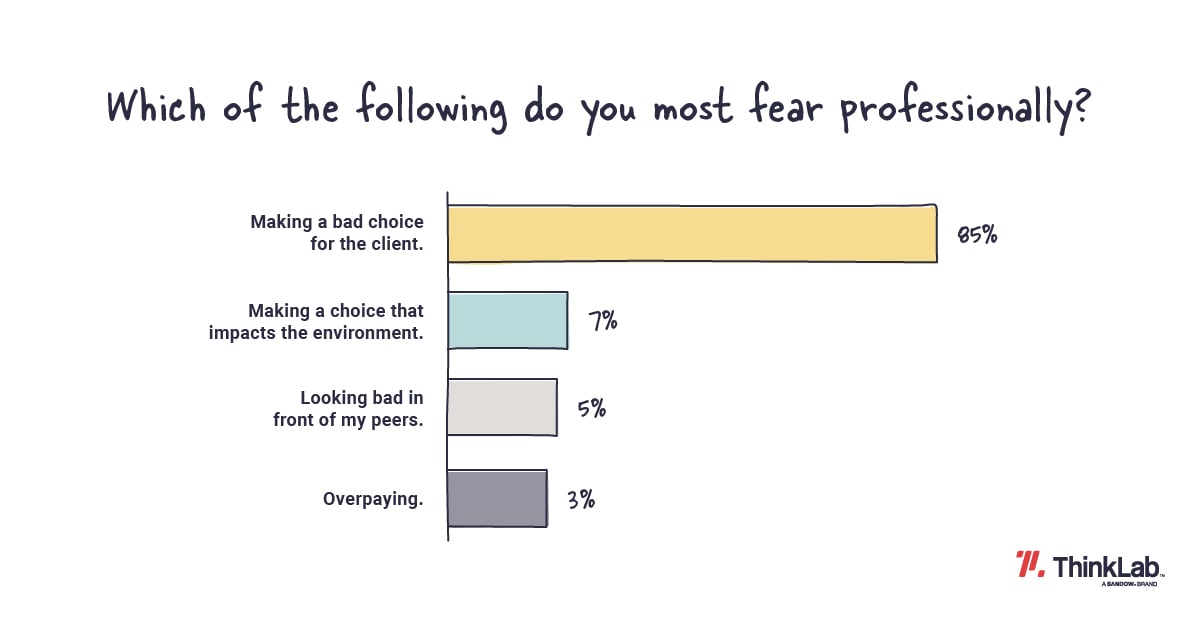
85% of specifiers fear making a bad choice for their client.
For 85 percent of specifiers, the number one fear is making a bad choice for the client. They want to reduce their risk, and they need you to save them from themselves.
91% of specifiers enjoy building rep relationships.
Even if it takes up some of their personal time, 91 percent of specifiers enjoy building relationships with reps. That said, one specifier told us:
“When I’m only downtown two days a week, I can’t imagine taking a two-hour lunch with a rep anymore.”
That means your encounters need to be packed with substance, not just sushi.
As we pointed out when discussing emerging tensions in the industry earlier in this post: “What was ‘selling to’ is now ‘buying with.’” That means what specifiers of all types want from a rep is twofold: deep technical expertise and responsiveness. When they need you, they value your smarts and your speed.
To learn more universal quick hits like this, listen to our Mpowered podcast episode, “What Do Designers Need Most From a Rep?”
5 Unique Specifier Personas for the Interior Design Industry
We then did what Kraus suggests and mapped out the stages of the design process, noting when each persona wanted human contact (be it local or remote) vs. when they wanted to self-serve with digital tools. This allowed us to create five unique specification journeys that outline how different specifier personas interact with your brand, based on a spectrum of “digital eagerness.”
Manufacturers can use these maps (along with 10 tips per specifier persona) to help personalize the journey to each persona’s preferences, all backed by design industry data that was collected along the way.
Watch this video introducing the five personas in relation to one another:
Now let’s take a look at each persona:
1. The Rep-First Specifier
Formerly the most-represented persona in our sample set, the rep-first specifier is likely the most familiar to you. In fact, if you are in sales, you may have thought this was the only specifier persona, before you even knew these specifier personas existed. Our research shows the rep-first persona is the most willing to spend their personal time building relationships with industry partners and prefers human interaction to a digital experience.
You may hear something like this from a rep-first specifier:
“I believe in personal relationships and value companies that have a local rep. Frankly, I want the local rep to know I’m considering their product.”
2. The Brand-First Specifier
This specifier recently unseated the rep-first persona in rank as the largest share of our sample set to date, and may already have been front and center for you if you are in marketing. Our research shows the brand-first persona values consistency and is the persona most willing to pay what it’s worth for the experience they’re after.
You may hear something like this from a brand-first specifier:
“I have a small collection of brands that are my go-tos. I’m extremely loyal and evangelistic about these brands and will only deviate if the client requires it.”
3. The Sustainability-First Specifier
Though this persona currently takes up the smallest percentage, don’t be fooled by its size. The sustainability-first specifier is probably working on some of the highest-profile, largest projects in our industry, and we believe it is a rapidly emerging persona segment. This persona is the most likely to take risks and adopt new ideas earlier compared with other personas, and they are very comfortable with virtual vs. in-person relationships because their need for technical expertise supersedes that of the other personas.
You may hear something like this from a sustainability-first specifier:
“I put sustainability choices first and foremost. If I don’t advocate for the environment, who will? My joy is helping clients discover they don’t have to sacrifice other things to reach sustainability goals.”
4. The Data-First Specifier
We found that this persona is the one most likely to work as an end user in purchasing or a member of the commercial real estate community. The data-first specifier is also the most likely to be working on large campus projects with annuity business and extensive RFPs. This persona is all about ease of doing business and much prefers a digital experience with your brand over a human one as the relationship is not as important in their role of work.
You may hear something like this from a data-first specifier:
“I have a specific set of criteria I am trying to meet, and I need clear information given to me by the manufacturer so that I can form my own comparisons.”
5. The Digital First Specifier
It's important to note that the digital-first specifier is not digital only. In fact, when they want to speak to a human, they require the quickest response of all the personas. This is the persona most fluent at switching between a human and digital experience and values things like online peer reviews to help them vouch for what they can’t experience in person or before specifying a product.
You may hear something like this from a digital-first specifier:
“I should be able to self-serve for all the easy stuff online without assistance. But when I need assistance, I need it now.”
2 Essential Ways to Support Customers
You can be reactive, or you can be proactive.
Speeding up your response time (a very important factor for specifiers, as we know) would be an example of reacting to their needs. Proactive support is about solving a need before it turns into an issue in the first placeThink of specifier personas as the ace up your sleeve to do just that: create the journey that’s designed to anticipate what they need, when and how they need it, based on what matters most to them.
“We live in a rapidly changing world, where we need to spend as much time rethinking as we do thinking.”
–Adam Grant, Think Again: The Power of Knowing What You Don't Know
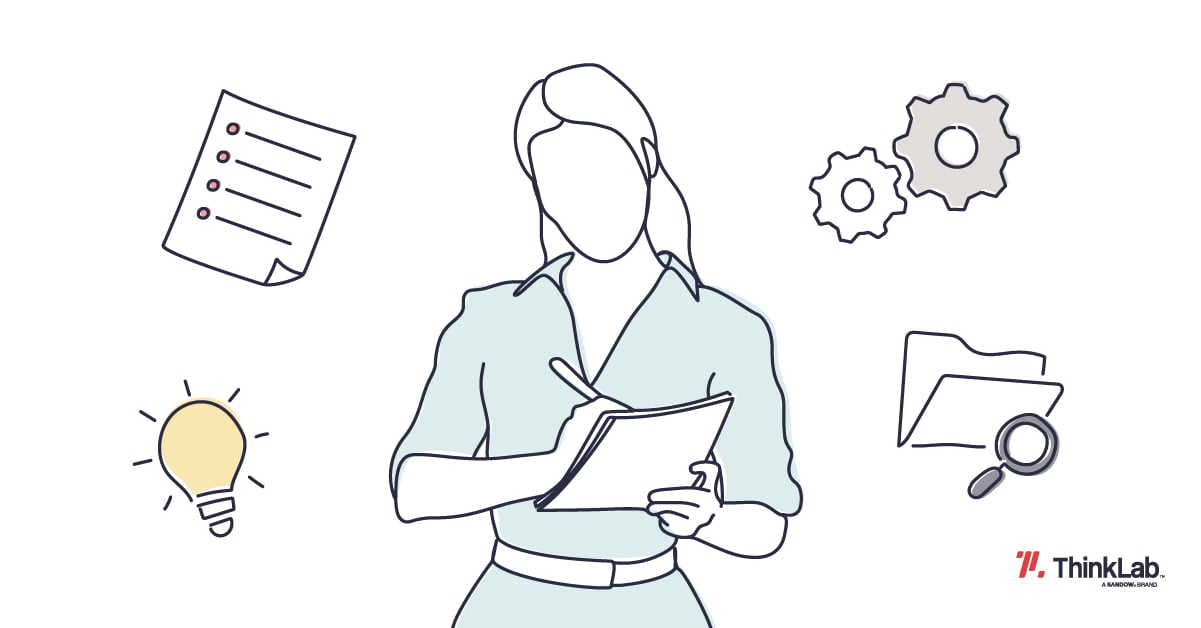
Supporting Content
- The Future is Phygital in the Design Industry
- How Do I Get Face Time With Architects and Designers Today?
- McKinsey & Company
- HubSpot
- Why Your Brand Needs Specifier Personas Now More Than Ever
- What Do Designers Need Most From a Rep?
- The Five Personas
- Specifier Personas for the Design Industry
Get the Full Research
It’s time to re-think how you do business. In a rapidly changing design landscape, understanding the diverse needs of your clients is crucial for success. Want our full market research on interior industry specifier personas, including demographics, needs, survey data, and more? Our comprehensive on-demand course + playbook offers you an opportunity to gain in-depth resources and insights, equipping you with the knowledge to excel.
Be ahead of the curve
- Gain insights into 5 key specifier personas tailored for the design industry, enabling you to create highly personalized experiences that resonate with your clients.
Take the guesswork out of understanding your audience
- Access valuable survey data from your target market, staying ahead of evolving needs and preferences to inform your strategies.
Implement immediate strategies
- Benefit from 50 actionable tactics that have been extensively researched and tested, helping you attract and retain design clients effectively.
.jpg)
So what are you waiting for? Don't miss this opportunity to enhance your customer focus with our full interior design industry specifier persona research.
Get the Full Research
Get instant access to survey insights and step-by-step solutions from our research experts. Use code TL_SAVE10 to save 10% on the self-paced course + playbook!
Contributors:

Amanda Schneider
ThinkLab Founder & President

Erica Waayenberg
Head of Research

Allison Roon
Research & Content Development